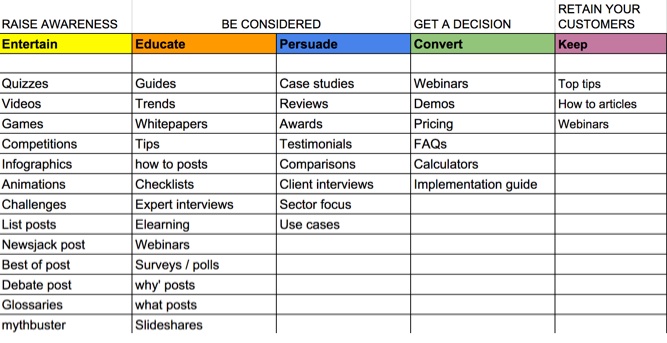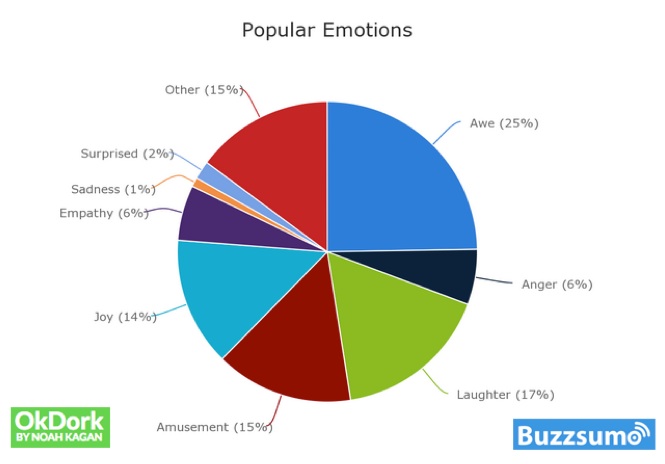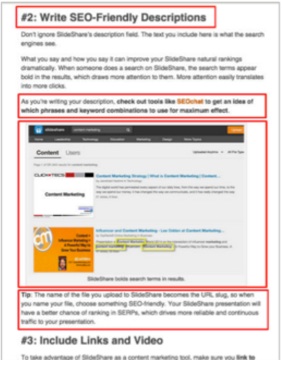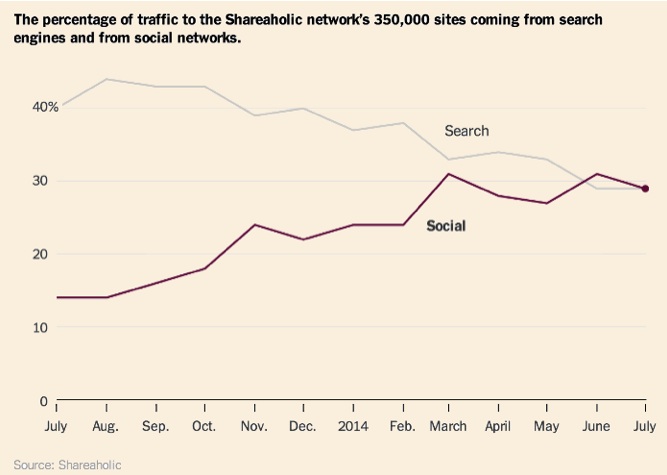Going Beyond Shareable Content with BuzzSumo’s Steve Rayson
 Today we’re happy to share our interview with BuzzSumo’s Steve Rayson. As BuzzSumo is a relatively new company, we asked Steve to talk a bit about its founding before answering the seven specific questions we had for him. You’ll want to be sure to read his intriguing take on the future of social sharing. Enjoy!
Today we’re happy to share our interview with BuzzSumo’s Steve Rayson. As BuzzSumo is a relatively new company, we asked Steve to talk a bit about its founding before answering the seven specific questions we had for him. You’ll want to be sure to read his intriguing take on the future of social sharing. Enjoy!
When was BuzzSumo founded?
The first version of the free product was created in 2013 by James Blackwell and Henley Wing. This tool allowed people to search for the most shared content published over the past 6 months.
At the time they were employed and developing the product in their spare time. I was so impressed by the tool that I approached James and Henley about developing a paid product, creating a company and working on the product full-time.
We first met face to face in December 2013, where I agreed to invest to allow James and Henley to work full-time on developing BuzzSumo Pro as a paid product.
We established BuzzSumo as a company in March 2014, with the three of us as directors. The first paid product, BuzzSumo Pro, was launched in September 2014. The paid version includes content alerts, reports and influencer analysis. We have continued to add to the product, including our latest trending features.
What was the inspiration for its creation?
In essence it was about searching for content that was resonating with people. Google is great, but it is based on authority sites. Thus if you search for, say, e-learning, it will start with Wikipedia. We were interested in the content that was resonating, e.g., what was the most shared content during this week or that month.
We were also interested in how content gets amplified, meaning who shares and links to the content and why? Our tool will show who shared an article and who linked to it so you can understand how it is being amplified. I think promotion is a much neglected area — people should spend as much or more time on promoting content as researching and creating it.
We are a small team so we tend to cover lots of bases. I tend to focus on marketing and strategic development, and relationships with partners. We have recently done joint webinars with Cana, Hubspot, Uberflip and Wordstream. On any given day I can be doing anything from researching new feature ideas and talking to customers about what would be helpful to them, to writing articles and answering support queries.
Any milestones in BuzzSumo’s growth that you’d like to share?
We recently passed 100,000 subscribers to our free product and more importantly 1,000 paying customers.
The key to any successful SaaS (software as a service) product is minimizing churn, which is the turnover of paying customers. Thus you want to make sure you have a product that provides value and that people use as part of their daily work.
You need to track things like active daily users and your ongoing churn rate, as well as your monthly growth in revenues and users.
It is important to focus on customer service as you grow and help your customers to get the most out of the tool. They are also your greatest asset in that they can help you identify features that will be really valuable to your audience.
BuzzSumo was once described as a “fusion of human intelligence and digital intelligence”. That seems to be a good descriptor – can you talk a little about that?
I am not sure where that came from but I understand the sentiment. It is difficult to define “good content” but we can define content that is resonating with audiences as we can see people share it and link to it. We can draw insights from this data.
Thus we can see that posts with images get more shares than posts without, that infographics are well shared in some areas, that list posts get more shares than other content formats, that quizzes get well shared, etc. We can then improve our odds of producing content that resonates by understanding this data.
We have found that the best content formats depend a lot on the topic and the audience. It is important to research what works with your audience.
Tracking content trends is also important. A BuzzSumo top content search will show you the most shared content in the last month or last 24 hours so you can see what is resonating. The BuzzSumo trending section will show you today’s most shared content for any topic, providing real time insights into the content that is engaging your audience.
We are fundamentally about helping people create better content: content that resonates and gets shared. We hopefully do that by providing insights through data such as what is working in your area or for your competitors.
Many companies push out large volumes of content to “please Google.” How can big data streamline a company’s content marketing efforts and gain better results?
I think you need to start with content research and produce a content plan. I think one of the most important aspects of content marketing is being consistent. You need to consistently produce content as the benefits accrue over time. You need a schedule, whatever that is — e.g. one blog post a week — and you need to stick to it.
Data helps you to focus on creating content that works, and getting a balance of content to support the various stages of the sales funnel. Here are some examples below:
What matters as much as the content itself is distribution and promotion, which we come to below.
Some experts believe that it’s better to write one really good piece of content a month (that’s properly promoted,) than multiple pieces of content with little or no promotion strategy. Have you seen data that supports this?
All content should be “good” and it can be better to produce one really good, well-researched article than four poor pieces of content. The key is that you are producing something of value to your audience. If you have limited resources you need to be realistic about what you can produce.
Sites like the Harvard Business Review produce good content but it doesn’t mean they only publish one blog post a week. In fact they average 50 blog posts a week. They do this through guest authors. Guest authors and curation are one way you can seek to increase the volume of content.
The key is that you promote your content. It doesn’t matter how good your content is, people will simply not find it if you don’t promote it. My view is that you need to spend as much time, if not more, promoting and amplifying content as creating it.
You need to think about this before you write your post. For example, can you involve influencers in the research or interview them? Be clear how you are going to promote the post – which social channels, how many people will share it for you, which forums are you going to submit your content to, what paid promotion you will use, etc.
From your research, how does the underlying emotion of a blog post impact its shareability? What can this mean for, say, B2B content that’s typically considered “boring?” Is there an opportunity there?
Emotion can help improve shareability. Last year we analyzed the top 10,000 most shared articles across the web, and mapped each one to an emotion, such as joy, sadness, anger, amusement, laughter, etc. Here is how the breakdown of how the emotions looked:
However, I don’t think you need to focus on emotion to get good shareability. In B2B, people are time pressed and want to do their job better and faster. Thus if you can produce content that is helpful, people will value it and share it.
So you can identify the key questions people are asking and produce good answers. The aim really is to be the best answer to the question. The top ten thousand “how to” posts this year were shared more than 19,000 times on average.
You can also experiment with list posts and picture lists. List posts provide a promise, such as “5 steps to improve your landing page”.
Posts that are well structured and skimmable also do well. Below is a good example. This post has clear numbered steps, links to further resources, good use of images to explain points, and top tips to make the post actionable.
Images work well because we process images much faster than text and they help us to skim articles faster. They also work well if you are taking someone through a process, telling a story or making comparisons. One post format I think will continue to do well is a picture list post, i.e., a curated series of images.
You conducted an interesting interview with SEMrush where you outlined how BuzzSumo and SEMrush go hand-in-hand for competitive intelligence efforts. Are there other tools you’d recommend for writers?
I use tools like BuzzSumo and Feedly to keep on top of new content and to generate content ideas.
On BuzzSumo, I use top content searches to find new content ideas, but what works better for me personally is setting up content alerts and custom trending feeds. I then turn each of these into RSS feeds that I pull into Feedly. I then get a constant stream of posts on specific topics such as data driven marketing.
For trending content, I will also use Hashtagify to see related trending hashtags.
Many smaller companies are direct competitors of large brands with big followings. What are some competitive intelligence steps their writers could take that could build authority faster and increase their content’s shareability?
There has never been a better time for small companies. They can move faster than larger brands and can achieve reach through web publishing combined with promotion and influencer marketing. They can really punch way above their weight.
Smaller companies can also jump on trends much faster and engage in relevant discussions.
They can build a personal voice, as well. I feel social is very much about people. I rarely follow someone unless they have a face; I don’t like to follow logos. When you think about whose articles you want to read on the web it is normally a person not a corporation.
If you peer into your crystal ball — where do you think social sharing is headed?
I think it is interesting that more people discover content now via social than via search. Social overtook search for the first time last year — in fact the volume of Google searches fell last year for the first time. A recent research project published by the American Press Institute found that young people get most of their news from social channels.
Social media’s role as a content discovery platform is only just beginning. I think people will become more sophisticated in how they build personal learning networks using social media and how they mine social data for trends.





Hi Laura, I’m Jonah from Hashtagify.me. Thank you so much for mentioning our tool.Appreciate it a lot!:)
Have a great day!
Jonah
Hi Jonah! The credit goes to Steve Rayson as I was just the messenger :) Appreciate your comment and will be sure to let Steve know!
BuzzSumo has changed our content marketing strategies for the better. Thanks for sharing this. I think others will find that BuzzSumo can be useful for coming up with content ideas, title suggestions and lots of other things. Definitely can be used for creating your own shareable content.
Dylan/Jonah
Thanks for the comments. Love hastagify.me, I use it to create trending dashboards in BuzzSumo all the time.
Dylan, so pleased BuzzSumo is working for you. Let me know if there are any additional features you would like to see added.
Steve